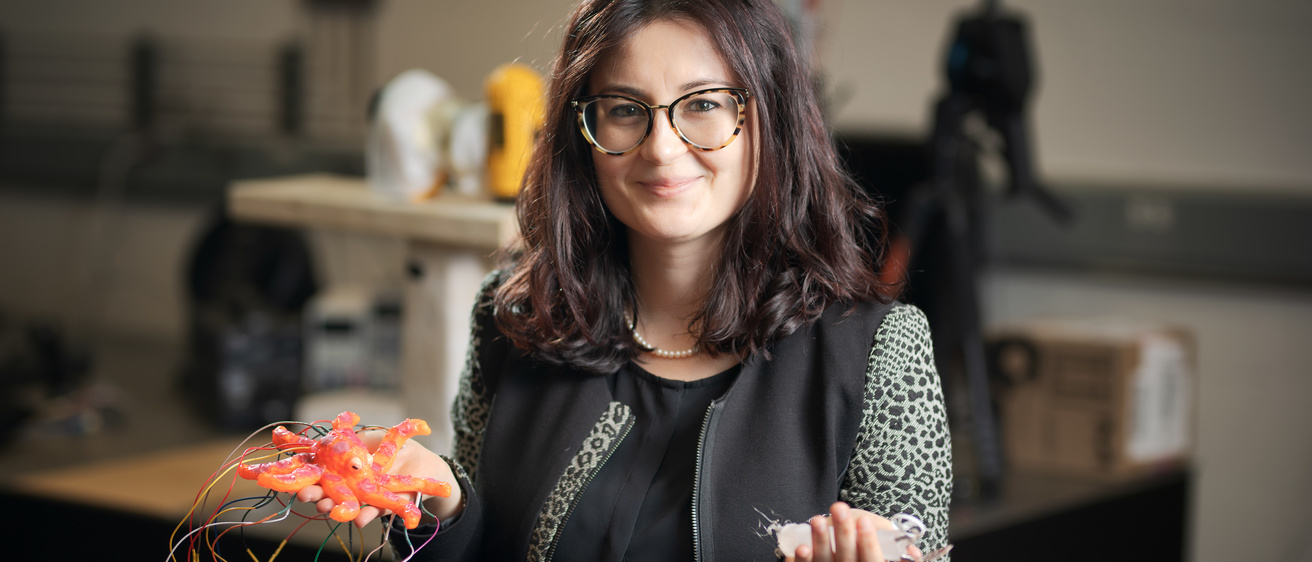Anyone who has seen a cephalopod such as an octopus or squid move knows that they are amazing creatures. Caterina Lamuta, assistant professor in the Department of Mechanical Engineering at the University of Iowa, has taken a keen interest in these creatures and has found new ways to mimic cephalopod tentacles in the lab. Lamuta was recently awarded a prestigious Young Investigator Award from the Defense Advanced Research Projects Agency (DARPA) to develop new self-morphing, stretchable soft skins (S⁴) for use in underwater vehicles and robots.
“Cephalopods can perform very fine and complex motion because their tentacles are formed by thin layers of soft tissues and muscles which have no solid structures such as bones,” said Lamuta. “We want to mimic this unique performance by embedding our twisted and coiled artificial muscles (TCAMS) inside thin rubber-like layers to develop soft skins that can be assembled to reproduce tentacle-like soft actuators for marine vehicles and robots.”
The lightweight and strong TCAMs can lift up to 12,600 times their own weight with a very small input voltage. Using the TCAMs as the base, Lamuta’s S⁴ will be powerful, lightweight and less than a millimeter in thickness. Once applied to vehicles and robots, S⁴ would provide attributes such as fine manipulation, swimming dexterity, bio-inspired propulsion, and the ability to adapt to conditions to control underwater drag.
Lamuta’s work is not only focused on soft actuators for underwater movement and manipulation. She also plans to combine S⁴ with other soft skins she recently developed for the United States Navy, that are capable of changing texture, so that she can completely mimic cephalopods’ performance for both manipulation and camouflage purposes.
The DARPA award will fund Lamuta’s work for three years and is one of the most prestigious awards professors can receive early in their careers. Lamuta’s research has also been supported by agencies such as Office of Naval Research, the National Science Foundation, the Air Force Office of Scientific Research, and NASA for a total of $2,000,000 in funding.
“This project has tremendous potential for applications across a wide spectrum including the military, healthcare, and private industry,” said Lamuta. “I am grateful that DARPA has chosen to support me in this project, and I am excited to see how our S⁴ continue to develop.”
